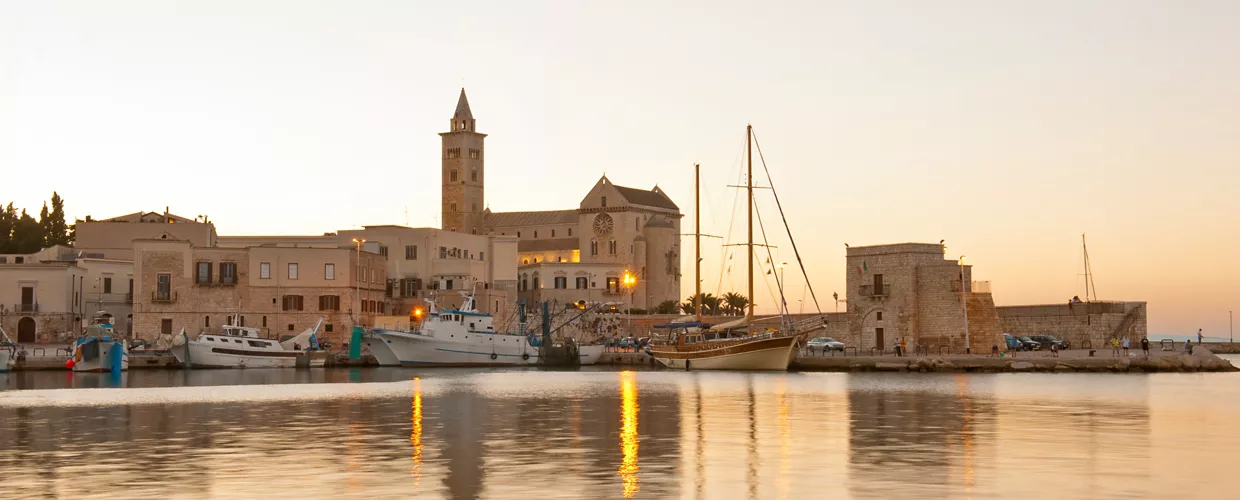This content was automatically translated. View the original text.


Overview
The busy town centre is famous for its cathedral, a fine example of the Apulian Romanesque style, and the historic centre overlooking the sea. The seafront is lined with elegant buildings, including several buildings of the Jewish community (a rare case for Puglia). Trani was once a Roman settlement, which underwent rapid growth during the Longobard era, when it was chosen as the bishop's seat instead of Canosa. As a trade hub, it flourished in the Norman period, but in the Swabian era reached its zenith as the logistics base for the Maritime Republics of Venice and Ragusa. The expulsion of Jews from parts of Europe such as France and Castile were exploited in order to draw wealthy merchants to the city. Before the expulsion of 1541, following an edict by Charles V, in the mid-12th century Trani counted no fewer than 200 families living in the Jewish quarter of Giudecca. Four Jewish places of worship were active in the 12th century, including the Great Synagogue, which became a Catholic church under the Angevins, and the Scolanova Synagogue, built in the Romanesque style with a cusp facade and a sail-type bell tower. The Scolanova was refurbished for use by the Jewish community in 2005. After this period, the city suffered a gradual decline, which was briefly interrupted when it was made capital of the Land of Bari at the end of the 16th century. The castle dates from the 12th century. Built by Frederick II of Swabia right opposite the cathedral, as a challenge to religious authority, it is a noteworthy defensive structure that once led directly to the sea. Today, access to the castle is via a stone bridge, built to replace the old wooden drawbridge. From the castle, there is a walk that offers incomparable views of the cathedral, down to the port. Opposite, there is the Caccetta palace, recognisable from the battered base and neo-Gothic portal, and the apses of the 12th-century All Saints Church. In Piazza Duomo, you will find the Typewriter Museum, which contains 400 exhibits from all over the world, as well as a section devoted to Adriano Olivetti. There is also the Diocesan Museum. Just a few steps away is the Beltrani building, used as a community centre for events and exhibitions, as well as the art gallery named after a local artist, Ivo Scaringi.
76125 Trani BT, Italia